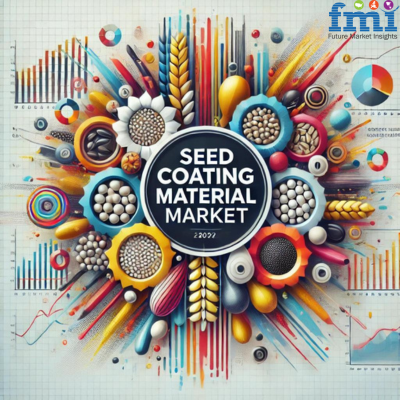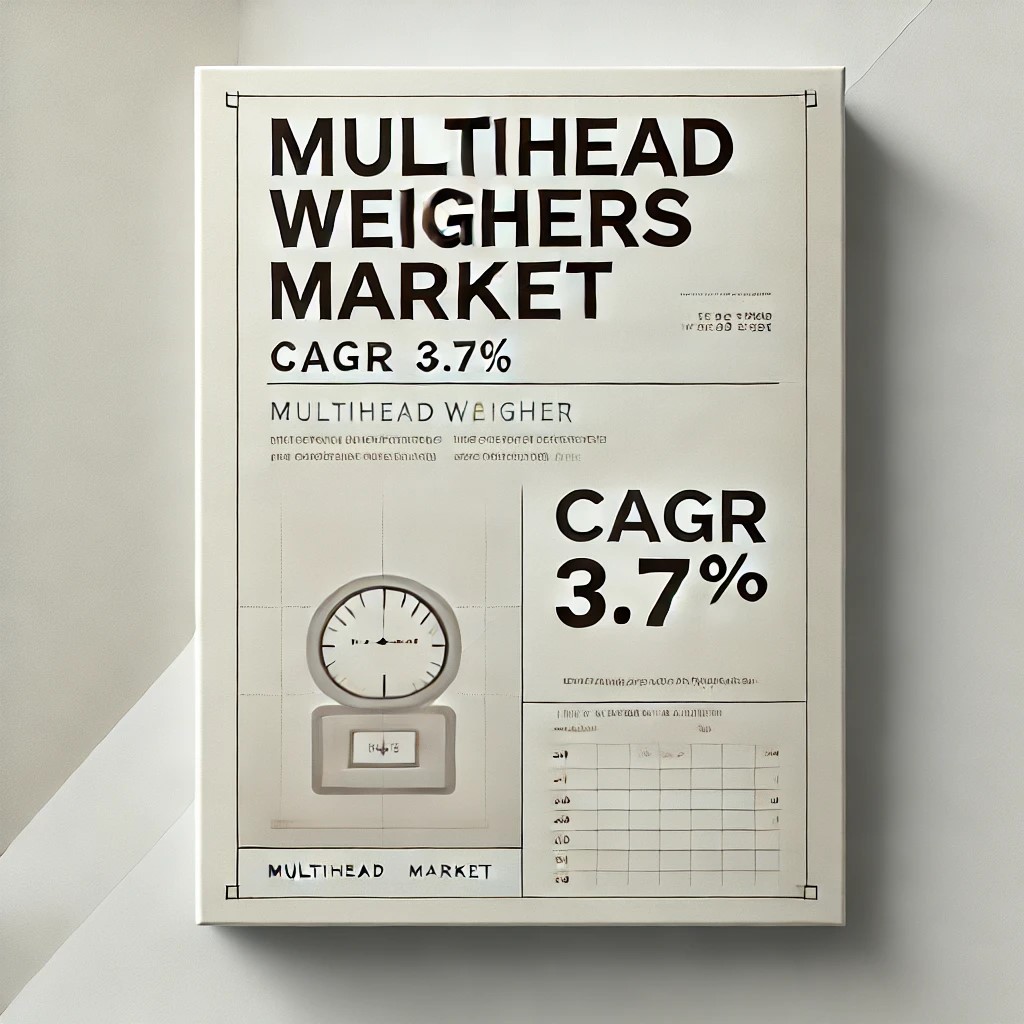The U.S. seed coating materials market is expected to grow at a CAGR of 3.6% until 2034. As the dominant market for seed coatings in North America, the U.S. is benefiting from supportive policies, such as the mandate for treated seeds to be dyed, along with a rising demand for improved yields.
NEWARK, DEL, Oct. 07, 2024 (GLOBE NEWSWIRE) — The seed coating material market is estimated to be worth USD 2,059.0 million in 2024 and is projected to be valued at USD 3,639.7 million in 2034. From 2024 to 2034, the industry is projected to experience a growth rate of 5.9%. Increasing awareness of environmental sustainability and the adverse effects of conventional agricultural methods have prompted the adoption of seed-coating materials that minimize the reliance on excessive pesticide use. These coatings, which include biological agents and beneficial microbes, play a crucial role in promoting eco-friendly farming practices.
The seed coating material market is poised for growth due to technological advancements and increasing agricultural demands. However, companies must navigate regulatory challenges and focus on sustainability to remain competitive in this evolving landscape.
The utilization of seed coatings, aimed at improving the germination process, shielding seeds from diseases and pests, and supplying crucial nutrients, serves as a driving force behind enhanced crop productivity. This makes seed coating an appealing option for farmers striving to optimize yields. Increased awareness among farmers about the benefits of seed coating materials, including improved seed quality, disease resistance, and enhanced plant performance, is a significant driver for market growth. Farmers are increasingly recognizing the value of seed coatings as a proactive measure for crop protection.
The increasing support from governments and agricultural organizations for the use of coated seeds as part of sustainable and eco-friendly agricultural practices. Regulatory frameworks and incentives for adopting seed coating technologies can drive market growth. Climate change and unpredictable weather patterns have increased the importance of seed coating materials in protecting crops from adverse environmental conditions.
Country-wise Analysis
| Countries | Forecast CAGRs from 2024 to 2034 | |
| The United States | 3.6% | |
| Germany | 4.7% | |
| China | 4.3% | |
| Brazil | 6.4% | |
| India | 5.8% | |
Key Takeaways
- From 2019 to 2023, the seed coating material market was valued at a CAGR of 5.6%
- Based on product type, the polymer segment is expected to account for a share of 55% in 2024.
- Global seed coating material demand in China is predicted to account for a CAGR of 4.3% in 2024.
- In the United States, the seed coating material industry is expected to account for a CAGR of 6.4% in 2024.
- Brazil is projected to expand by a value CAGR of 6.4% between 2024 and 2034.
- The seed coating material market in India is anticipated to record a CAGR of 5.8% in 2024.
“The increasing use of sustainable agricultural practices and increase in agricultural investment to drive the market growth during the forecast period.” says Nandini Roy Choudhury (Client Partner for Food & Beverages at Future Market Insights, Inc.).
Browse full Report: https://www.futuremarketinsights.com/reports/seed-coating-material-market
Seed Coating Material Market Drivers
1. Increase in Global Population:
The growing global population leads to increased food demand, prompting the need for enhanced agricultural productivity. Seed coatings can improve germination rates, disease resistance, and overall yield, making them an essential component in modern agriculture.
2. Technological Advancements:
Innovations in seed coating materials, such as the development of biobased, biodegradable, and smart coatings, are enhancing the effectiveness of seed treatments. Technologies like controlled-release formulations and nano-coatings are gaining popularity.
3. Focus on Sustainable Agriculture:
The shift towards sustainable farming practices drives the demand for eco-friendly seed coating materials. Biodegradable coatings that reduce environmental impact are increasingly favored by farmers and agricultural companies.
4. Government Support and Subsidies:
Many governments are implementing policies and providing subsidies to encourage the use of advanced seed technologies, including seed coatings. This support is boosting market growth, particularly in developing countries.
5. Rising Awareness of Seed Treatments:
Increased awareness among farmers about the benefits of seed treatments, including better crop establishment and enhanced resistance to pests and diseases, is driving demand for seed coating materials.
6. Growing Demand for High-Quality Seeds:
The rise in demand for hybrid and genetically modified seeds, which often require specific coatings for protection and performance enhancement, is a significant driver for the seed coating material market.

Competitive Landscape
Companies invest heavily in research and development to create innovative seed coating formulations. Developing coatings with advanced functionalities, such as improved disease resistance, stress tolerance, and nutrient delivery, can provide a competitive edge.
- Bayer CropScience AG is a global life sciences company that operates in the fields of healthcare and agriculture. Bayer CropScience focuses on providing innovative solutions in crop protection, seeds, and environmental science.
- BASF SF is a multinational chemical company with a strong presence in various industries, including agriculture. BASF offers a range of agricultural solutions, including crop protection products and seed treatments.
- Clariant International is a specialty chemicals company that provides solutions in various sectors, including agriculture. In the seed coating material market, Clariant offers products that enhance seed performance and protect against diseases.
Key Companies Profiled are Bayer CropScience AG; BASF SE; Clariant International; Croda International; Incotec Group; Chromatech Incorporated; Germains Seed Technology; Brett Young; Keystone Aniline Corporation; Precision Laboratories; Mahendra Overseas
More Valuable Insights Available
Future Market Insights offers an unbiased analysis of the global seed coating material market, providing historical data from 2019 to 2023 and forecast statistics between 2024 and 2034.
To understand opportunities in the seed coating material industry by product type (Polymers, Pellets, Colorants, Minerals/Pumice, Other Types) By Crop Type(Cereals and grains, Vegetables, Oilseeds and pulses, Flowers and ornamentals, Other crop types) Region (North America, Latin America, Western Europe, Eastern Europe, South Asia and Pacific, East Asia, the Middle East, and Africa).
Purchase the Report for Key Insights: https://www.futuremarketinsights.com/checkout/916
Seed Coating Material Market -Key Segments
By Product Type:
- Polymers
- Pellets
- Colorants
- Minerals/Pumice
- Other Types
By Crop Type:
- Cereals and Grains
- Vegetables
- Oilseeds & Pulses
- Flowers & Ornamentals
- Other Crop Types
By Region:
- North America
- Latin America
- Western Europe
- Eastern Europe
- South Asia and Pacific
- East Asia
- Middle East and Africa
German Translation
Der Markt für Saatgutbeschichtungsmaterial wird im Jahr 2024 auf 2.059,0 Mio. USD geschätzt und wird im Jahr 2034 voraussichtlich auf 3.639,7 Mio. USD geschätzt.Von 2024 bis 2034 wird für die Branche eine Wachstumsrate von 5,9 % prognostiziert. Das zunehmende Bewusstsein für ökologische Nachhaltigkeit und die negativen Auswirkungen konventioneller landwirtschaftlicher Methoden haben zur Einführung von Saatgutbeschichtungsmaterialien geführt, die die Abhängigkeit von übermäßigem Pestizideinsatz minimieren. Diese Beschichtungen, zu denen biologische Wirkstoffe und nützliche Mikroben gehören, spielen eine entscheidende Rolle bei der Förderung umweltfreundlicher Anbaumethoden.
Die Verwendung von Saatgutbeschichtungen, die darauf abzielen, den Keimprozess zu verbessern, das Saatgut vor Krankheiten und Schädlingen zu schützen und wichtige Nährstoffe zu liefern, ist eine treibende Kraft für eine höhere Pflanzenproduktivität. Dies macht die Saatgutbeschichtung zu einer attraktiven Option für Landwirte, die ihre Erträge optimieren wollen. Das gestiegene Bewusstsein der Landwirte für die Vorteile von Saatgutbeschichtungsmaterialien, einschließlich verbesserter Saatgutqualität, Krankheitsresistenz und verbesserter Pflanzenleistung, ist ein wesentlicher Treiber für das Marktwachstum. Landwirte erkennen zunehmend den Wert von Saatgutbeschichtungen als proaktive Maßnahme zum Pflanzenschutz.
Die zunehmende Unterstützung von Regierungen und landwirtschaftlichen Organisationen für die Verwendung von beschichtetem Saatgut als Teil nachhaltiger und umweltfreundlicher landwirtschaftlicher Praktiken. Regulatorische Rahmenbedingungen und Anreize für die Einführung von Saatgutbeschichtungstechnologien können das Marktwachstum vorantreiben. Der Klimawandel und unvorhersehbare Wettermuster haben die Bedeutung von Saatgutbeschichtungsmaterialien für den Schutz der Pflanzen vor widrigen Umweltbedingungen erhöht.
Analyse nach Ländern
| Länder | Prognose der CAGRs von 2024 bis 2034 | |
| Die Vereinigten Staaten | 3.6 | % |
| Deutschland | 4.7 | % |
| China | 4.3 | % |
| Brazilien | 6.4 | % |
| Indien | 5.8 | % |
Wichtige Erkenntnisse
· Von 2019 bis 2023 wurde der Markt für Saatgutbeschichtungsmaterial mit einer CAGR von 5,6 % bewertet
· Basierend auf dem Produkttyp wird erwartet, dass das Polymersegment im Jahr 2024 einen Anteil von 55 % ausmachen wird.
· Es wird prognostiziert, dass die weltweite Nachfrage nach Saatgutbeschichtungsmaterial in China im Jahr 2024 eine CAGR von 4,3 % ausmachen wird.
· In den Vereinigten Staaten wird erwartet, dass die Saatgutbeschichtungsmaterialindustrie im Jahr 2024 eine CAGR von 6,4 % ausmachen wird.
· Es wird prognostiziert, dass Brasilien zwischen 2024 und 2034 um eine CAGR von 6,4 % wachsen wird.
· Es wird erwartet, dass der Markt für Saatgutbeschichtungsmaterial in Indien im Jahr 2024 eine CAGR von 5,8 % verzeichnen wird.
“Der zunehmende Einsatz nachhaltiger landwirtschaftlicher Praktiken und die Zunahme landwirtschaftlicher Investitionen, um das Marktwachstum im Prognosezeitraum voranzutreiben”, sagt Nandini Roy Choudhury (Client Partner für Lebensmittel und Getränke bei Future Market Insights, Inc.).
Seed Coating Material Market Drivers
1. Increase in Global Population:
The growing global population leads to increased food demand, prompting the need for enhanced agricultural productivity. Seed coatings can improve germination rates, disease resistance, and overall yield, making them an essential component in modern agriculture.
2. Technological Advancements:
Innovations in seed coating materials, such as the development of biobased, biodegradable, and smart coatings, are enhancing the effectiveness of seed treatments. Technologies like controlled-release formulations and nano-coatings are gaining popularity.
3. Focus on Sustainable Agriculture:
The shift towards sustainable farming practices drives the demand for eco-friendly seed coating materials. Biodegradable coatings that reduce environmental impact are increasingly favored by farmers and agricultural companies.
4. Government Support and Subsidies:
Many governments are implementing policies and providing subsidies to encourage the use of advanced seed technologies, including seed coatings. This support is boosting market growth, particularly in developing countries.
5. Rising Awareness of Seed Treatments:
Increased awareness among farmers about the benefits of seed treatments, including better crop establishment and enhanced resistance to pests and diseases, is driving demand for seed coating materials.
6. Growing Demand for High-Quality Seeds:
Die steigende Nachfrage nach Hybrid- und gentechnisch verändertem Saatgut, das häufig spezielle Beschichtungen zum Schutz und zur Leistungssteigerung erfordert, ist ein wesentlicher Treiber für den Markt für Saatgutbeschichtungsmaterialien.
Wettbewerbslandschaft
Unternehmen investieren stark in Forschung und Entwicklung, um innovative Saatgutbeschichtungsformulierungen zu entwickeln. Die Entwicklung von Beschichtungen mit fortschrittlichen Funktionen, wie z. B. verbesserter Krankheitsresistenz, Stresstoleranz und Nährstoffzufuhr, kann einen Wettbewerbsvorteil verschaffen.
· Die Bayer CropScience AG ist ein weltweit tätiges Life-Sciences-Unternehmen, das in den Bereichen Gesundheit und Landwirtschaft tätig ist. Bayer CropScience konzentriert sich auf die Bereitstellung innovativer Lösungen in den Bereichen Pflanzenschutz, Saatgut und Umweltwissenschaften.
· BASF SF ist ein multinationales Chemieunternehmen mit einer starken Präsenz in verschiedenen Branchen, einschließlich der Landwirtschaft. BASF bietet eine Reihe von Lösungen für die Landwirtschaft an, darunter Pflanzenschutzmittel und Saatgutbehandlungen.
· Clariant International ist ein Spezialchemieunternehmen, das Lösungen für verschiedene Sektoren, einschließlich der Landwirtschaft, anbietet. Auf dem Markt für Saatgutbeschichtungsmaterialien bietet Clariant Produkte an, die die Leistung des Saatguts verbessern und vor Krankheiten schützen.
Zu den wichtigsten Unternehmen, die vorgestellt werden, gehören die Bayer CropScience AG; BASF SE; Clariant International; Croda International; Incotec-Gruppe; Chromatech Incorporated; Germains Saatgut-Technologie; Brett Young; Keystone Anilin Corporation; Präzisionslaboratorien; Mahendra in Übersee
Weitere wertvolle Erkenntnisse verfügbar
Future Market Insights bietet eine unvoreingenommene Analyse des globalen Marktes für Saatgutbeschichtungsmaterialien und liefert historische Daten von 2019 bis 2023 und Prognosestatistiken zwischen 2024 und 2034.
Um die Möglichkeiten in der Saatgutbeschichtungsmaterialindustrie nach Produkttyp (Polymere, Pellets, Farbstoffe, Mineralien/Bimsstein, andere Typen) nach Pflanzentyp (Getreide und Getreide, Gemüse, Ölsaaten und Hülsenfrüchte, Blumen und Zierpflanzen, andere Pflanzenarten) zu verstehen Region (Nordamerika, Lateinamerika, Westeuropa, Osteuropa, Südasien und Pazifik, Ostasien, Naher Osten und Afrika).
Markt für Saatgutbeschichtungsmaterial – Schlüsselsegmente
Nach Produkttyp:
- Polymere
- Kügelchen
- Farbstoffe
- Mineralien/Bimsstein
- Andere Typen
Nach Pflanzentyp:
- Getreide und Getreide
- Gemüse
- Ölsaaten & Hülsenfrüchte
- Blumen & Zierpflanzen
- Andere Pflanzenarten
Nach Region:
- Nordamerika
- Lateinamerika
- Westeuropa
- Osteuropa
- Südasien und Pazifik
- Ostasien
- Naher Osten und Afrika
Author
Nandini Roy Choudhury (Client Partner for Food & Beverages at Future Market Insights, Inc.) has 7+ years of management consulting experience. She advises industry leaders and explores off-the-eye opportunities and challenges. She puts processes and operating models in place to support their business objectives.
She has exceptional analytical skills and often brings thought leadership to the table.
Nandini has vast functional expertise in key niches, including but not limited to food ingredients, nutrition & health solutions, animal nutrition, and marine nutrients. She is also well-versed in the pharmaceuticals, biotechnology, retail, and chemical sectors, where she advises market participants to develop methodologies and strategies that deliver results.
Her core expertise lies in corporate growth strategy, sales and marketing effectiveness, acquisitions and post-merger integration and cost reduction. Nandini has an MBA in Finance from MIT School of Business. She also holds a Bachelor’s Degree in Electrical Engineering from Nagpur University, India.
Nandini has authored several publications, and quoted in journals including Beverage Industry, Bloomberg, and Wine Industry Advisor.
Top Reports Related to Food and Beverage Market:
The global forage seeds market is forecast to reach a valuation of US$ 12,132.9 million in 2023 and further accelerate at a robust CAGR of 9.8% between 2023 and 2033.
Over the assessment period from 2024 to 2034, the global microbial seed treatment market is projected to expand at a compound annual growth rate (CAGR) of 12.5%, resulting in a size of USD 3,869.2 million by the end of 2034.
According to the research of Future Market Insights, the market for Chamomile Seeds is anticipated to expand at a CAGR of 5.5% over the forecasted time period.
The cottonseed oil market is anticipated to record a value of USD 5,891 million in 2024. The industry is projected to witness a CAGR of 6.8% in the ten-year time frame, with total revenue reaching around USD 8,189 million by 2034.
Global cassia seed extract demand is anticipated to be valued at US$ 411.5 million in 2023, forecast to grow at a CAGR of 4.9% to be valued at US$ 663.4 million from 2023 to 2033.
Citrus seeds sales growing to US$ 8.9 billion by 2033, garnering a CAGR of 6.8% during the forecast period, 2023 to 2033.
The overall sales of flax seed meals are projected to grow at a robust CAGR of 6.2% between 2023 and 2033, totaling around US$ 18,613.0 million by the end of 2033.
According to a survey by Future Market Insights, the global Seed Health market is projected to expand at a CAGR of 5.4% during the predicted time frame. Forecasts indicate that the market will be valued at USD 71.1 Billion in 2032.
Global demand for seed binders is expected to reach a market valuation of USD 30 million by the year 2023, accelerating at a CAGR of 6.5% over the forecast period (2023 to 2033).
According to Future Market Insights research, during the projected forecast period, the Seed Biostimulants market is expected to grow at a CAGR of 3.4%.
About Future Market Insights (FMI)
Future Market Insights, Inc. (ESOMAR certified, recipient of the Stevie Award, and a member of the Greater New York Chamber of Commerce) offers profound insights into the driving factors that are boosting demand in the market. FMI stands as the leading global provider of market intelligence, advisory services, consulting, and events for the Packaging, Food and Beverage, Consumer Technology, Healthcare, Industrial, and Chemicals markets. With a vast team of over 400 analysts worldwide, FMI provides global, regional, and local expertise on diverse domains and industry trends across more than 110 countries.
Join us as we commemorate 10 years of delivering trusted market insights. Reflecting on a decade of achievements, we continue to lead with integrity, innovation, and expertise.
Contact Us:
Future Market Insights Inc.
Christiana Corporate, 200 Continental Drive,
Suite 401, Newark, Delaware – 19713, USA
T: +1-347-918-3531
For Sales Enquiries: [email protected]
Website: https://www.futuremarketinsights.com
LinkedIn| Twitter| Blogs | YouTube

Legal Disclaimer:
EIN Presswire provides this news content “as is” without warranty of any kind. We do not accept any responsibility or liability
for the accuracy, content, images, videos, licenses, completeness, legality, or reliability of the information contained in this
article. If you have any complaints or copyright issues related to this article, kindly contact the author above.
![]()
Originally published at https://www.einpresswire.com/article/749646965/the-global-seed-coating-material-market-is-projected-to-attain-a-value-of-usd-3-639-7-million-by-2034-growing-at-a-cagr-of-5-9-according-to-future






